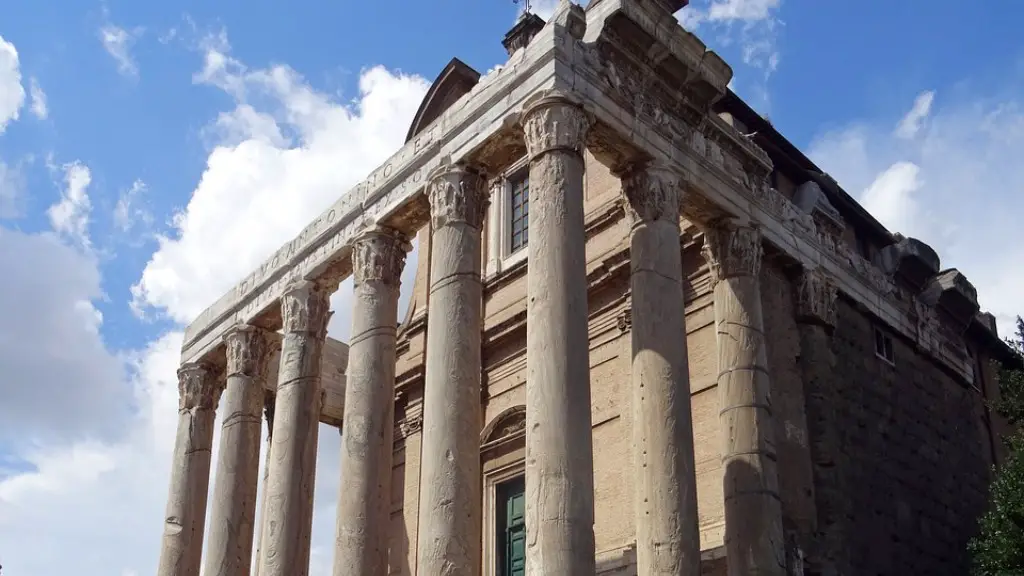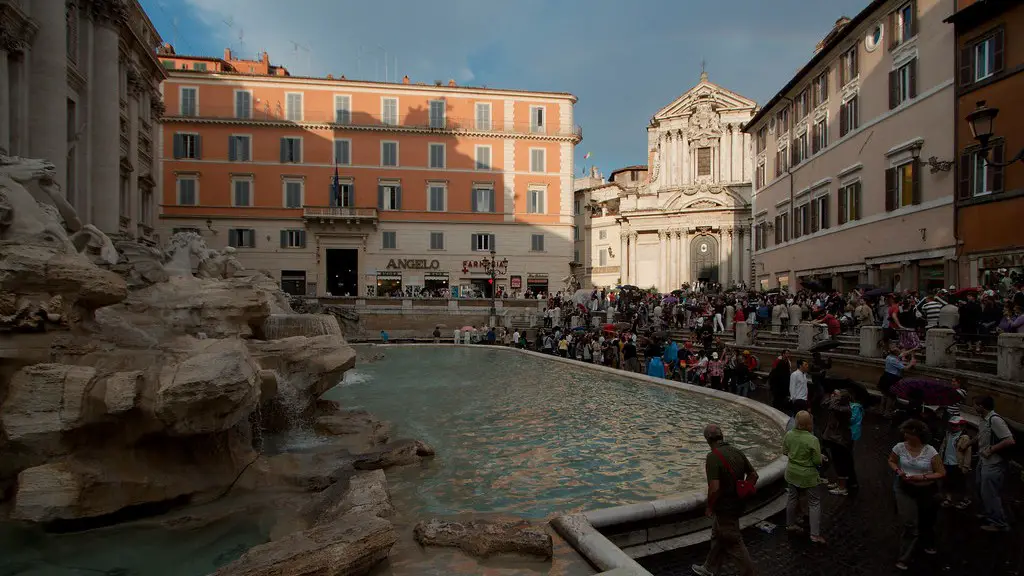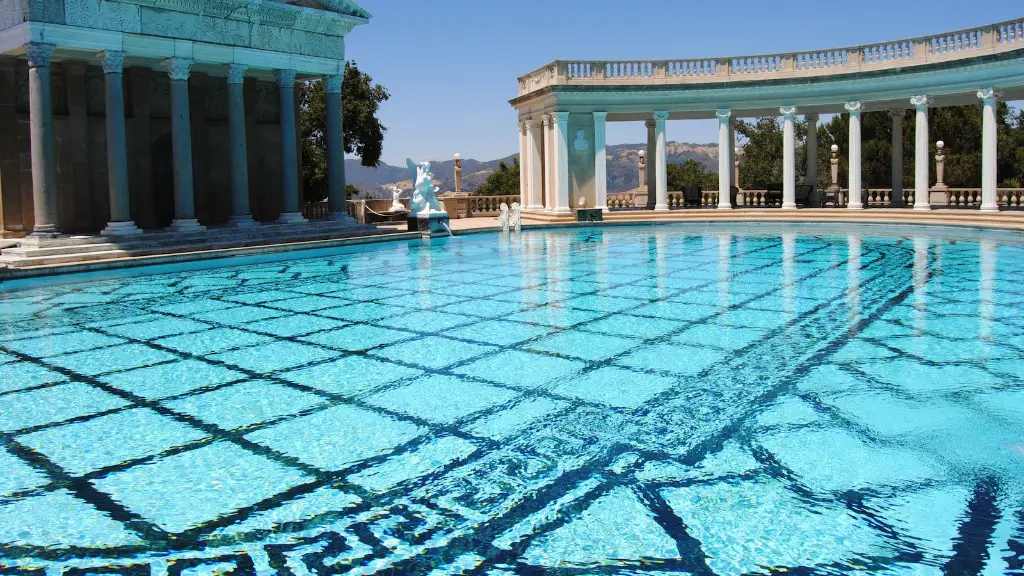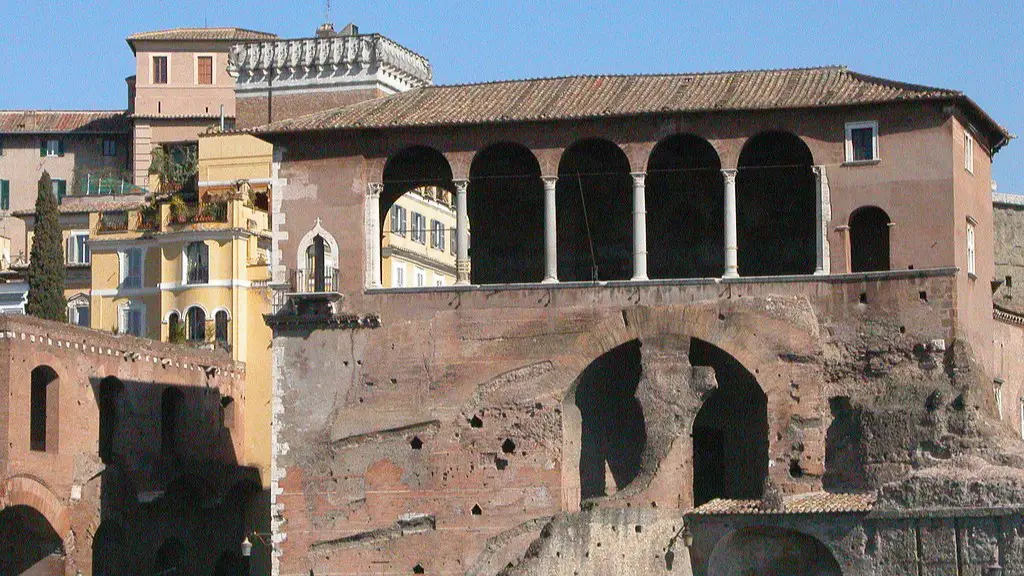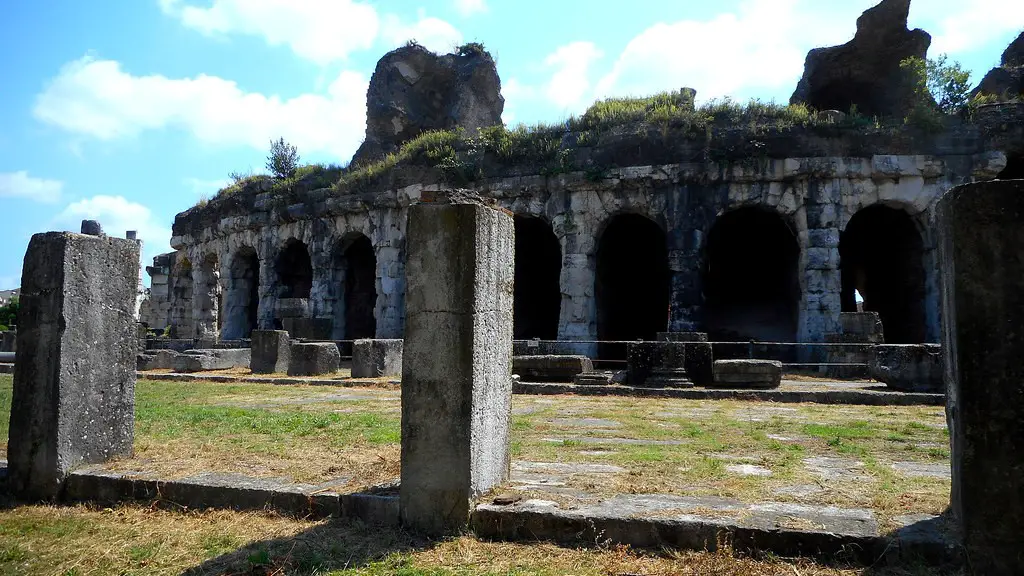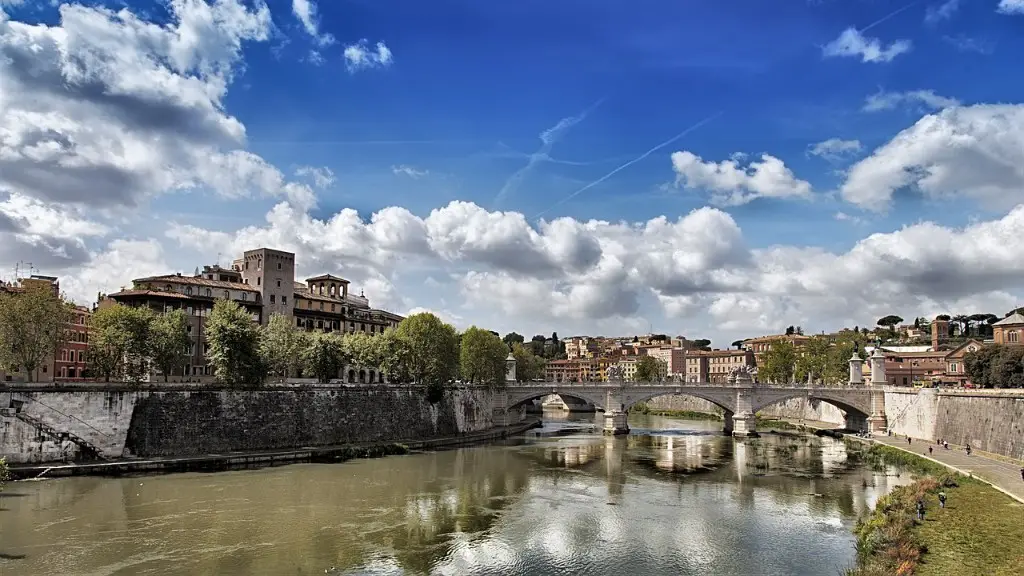The practice of medicine in ancient Rome began thousands of years ago, with the first Roman doctor being Asclepiades in the 4th century BC. Roman medical practices were based on the theories of Hippocrates and Galen, who developed the foundation of medicine that is still used today. Despite the advanced theories of these early physicians, Roman medical practice was often primitive and outdated, leading to a variety of different treatments than those of modern medicine.
One of the most prominent treatments used in ancient Rome for a variety of ailments was the application of baths and salves. Bathing was an important part of daily Roman life, and the knowledge of certain herbs and oils were put to use to treat conditions such as pain, skin complaints and even fevers. Herbal concoctions such as vinegar and honey were also used for treating minor ailments such as headaches and colds.
Activity was also a key element of Roman medicine, with doctors recommending physical exercise to strengthen the body. This included tasks such as walking and running, as well as exercises that could help to develop strength. Diet was also an integral part of medical advice in ancient Rome, with food items such as bread, honey and olives being seen as important components of a healthy diet.
Surgery was rarely used in ancient Rome and was typically seen as a last resort. Most medical operations were carried out with primitive tools and relatively crude techniques. Surgery was seen as a sign of desperation and was very often unsuccessful, leading to death or disfigurement.
The use of drugs and medication was also used to treat certain ailments in Roman times, but it was often inconsistent in quality and potency. Oils, juices and powders were used as medicines, and some were believed to have positive effects on the body. However, they could also contain dangerous toxins or contaminants, leading to further medical complications or even death.
Leeching was also a common medical practice in ancient Rome and was used to cure a variety of illnesses. Bloodletting was thought to be beneficial as it removed “bad blood” from the body, and it was also a popular treatment for headaches and other minor ailments.
Overall, the practice of medicine in ancient Rome was quite primitive and outdated compared to modern medicine. Despite this, it is clear that many of the treatments used were based on the theories of some of the most prominent Roman physicians, and many of the beliefs and theories from this period are still in use today.
Treatments To Balance The Four Humours
The four humours of ancient Greek medicine, which focussed on balance between good and bad characteristics of the body, were vital to Roman medical practices. This four humour theory was believed to influence the way the body operated and caused physical, mental, and emotional imbalances when there was too much or too little of each of the four humours. As such, there were a variety of treatments aimed at restoring balance between the four humours. These included the use of foods, baths, and herbal concoctions.
For example, black bile and phlegm were generally considered to be bad humours and so treatments that aimed to reduce the levels of these humours were used. This could include fasting or the ingestion of certain herbs such as aloe and centaury, which were believed to have cleansing powers. On the other hand, yellow bile and blood were thought to be good humours and so treatments that increased their levels were used. Plants such as turpentine, hyssop and rosemary were believed to promote the production of these humours and so were often prescribed.
The application of heat, especially in the form of sweat baths and hot stones, was also popular in ancient Rome as a means of clearing out bad humours, while cold applications such as cupping and leeching were utilised to reduce inflammation and excess levels of good humours. Each treatment was tailored to the individual patient and was closely monitored by the physician.
A variety of drugs and medications were also used in ancient Rome, although their effectiveness could not always be ensured due to the primitive techniques used in the production of these substances. Opiates and antimony were two substances believed to have healing powers, and were prescribed for a wide range of illnesses and conditions.
The Use of Surgery
Despite the primitive nature of Roman medical practices, some operations were also carried out with relative success, although these were still extremely risky. Surgery was rarely used, with doctors being hesitant to carry out operations, and in some cases, it was considered to be a form of punishment rather than medical treatment.
Operations such as skull trepanation, in which a hole is drilled into the skull, were sometimes used to treat head and brain injuries. Surgery was also used to open the abdomen and reduce the pressure of abdominal swellings. This was particularly common during childbirth, when it was used to remove the placenta or deliver a baby that was too large for the mother to bear.
Overall, Roman surgery was generally extremely primitive and carried out without anaesthetic or antiseptics. While some operations were successful, many of them ended in death or disfigurement.
Public Health
One area where the Roman Empire excelled was public health. Several public policies were implemented to ensure the well-being of its citizens, including the building of aqueducts, baths and sewers. These helped to improve sanitation and reduce the spread of disease.
The Romans also developed advanced methods of dealing with waste. Rather than dumping it into rivers and streams, it was disposed of carefully and in an efficient manner. This helped to keep the streets and waterways of Rome clean and reduce the risk of disease.
Furthermore, the Romans had a strong understanding of the need for hygiene and implemented measures to ensure that the environment was kept clean. They also took steps to ensure that food and drink were safe, with strict laws against selling expired or spoiled items.
Medical Education
Roman medical practitioners were well-educated and trained in the knowledge of medicine. Training included instruction in anatomy, physiology, pharmacology and surgery. Students were expected to study for several years before beginning to practice medicine, and upon graduation, they would often become part of an established school or university.
In conclusion, the practice of medicine in ancient Rome was not as advanced as that of today, but it did use some of the same methods and techniques. Roman doctors had an understanding of health, diet and hygiene that was far ahead of its time, and many of their findings still form the basis of modern medical practices.
Spiritual Aspects Of Treatment
In addition to the physical treatments used in ancient Rome, spiritual healing was also a prominent form of medicine. The Romans believed in gods and goddesses that were thought to have control over different elements of the body and mind, and so prayers and offerings were made to them in order to heal the sick.
Spiritual healers were often consulted as a last resort, and their methods ranged from prayer and meditation to divination and exorcism. It was believed that these treatments could help to restore the harmony and balance of the body, and that they could even influence the gods and goddesses to help the patient to recover.
The use of superstition and faith was also a prominent feature of medical practices in ancient Rome. Many diseases were attributed to evil spirits, and rituals were employed to ward off these spirits. This included the burning of incense, the use of charms and amulets, and the recitation of prayers and spells.
As such, it is clear that many aspects of spiritual healing were an important part of medical treatment in ancient Rome. While these treatments may not have been based on scientific understanding, it is clear that they had positive effects on many of the patients that used them.
Caveat Emptor
Due to the limited knowledge of medicine that existed in ancient Rome, patients were often at the mercy of physicians and were vulnerable to exploitation. Medicine was expensive, and many people were unable to afford treatments. This led to a rise in quack medicine, with fraudulent treatments being sold at exorbitant prices.
Doctors often charged large sums of money for seemingly miraculous treatments that, in reality, had little or no effect. This led to a situation where many patients were duped into believing false promises and never received the healing they desired. As such, medieval doctors were often viewed as unscrupulous characters, and medical practice was seen as a form of extortion rather than a valuable service.
Furthermore, Roman medicine was often dangerous, and many surgeries ended in death or disfigurement. This led to a distrust of doctors and medicine, and to the lack of regulation that still persists today.
Legacy Of Roman Medicine
Despite its shortcomings, it is clear that Roman medicine had a significant impact on the development of medicine in the modern world. The knowledge of Hippocrates and Galen, and the theories of the four humours, form the basis of all modern medical theories. The public health policies put in place by the Romans also helped to reduce the spread of diseases and improve the overall health of citizens.
Furthermore, the requirement for training and education for medical practitioners, as well as the enforcement of regulations, has helped to ensure the safety of patients and the quality of medical treatments. As such, it is clear that the legacy of Roman medicine lives on in the modern world and still has a huge influence on the development of medical practices today.
